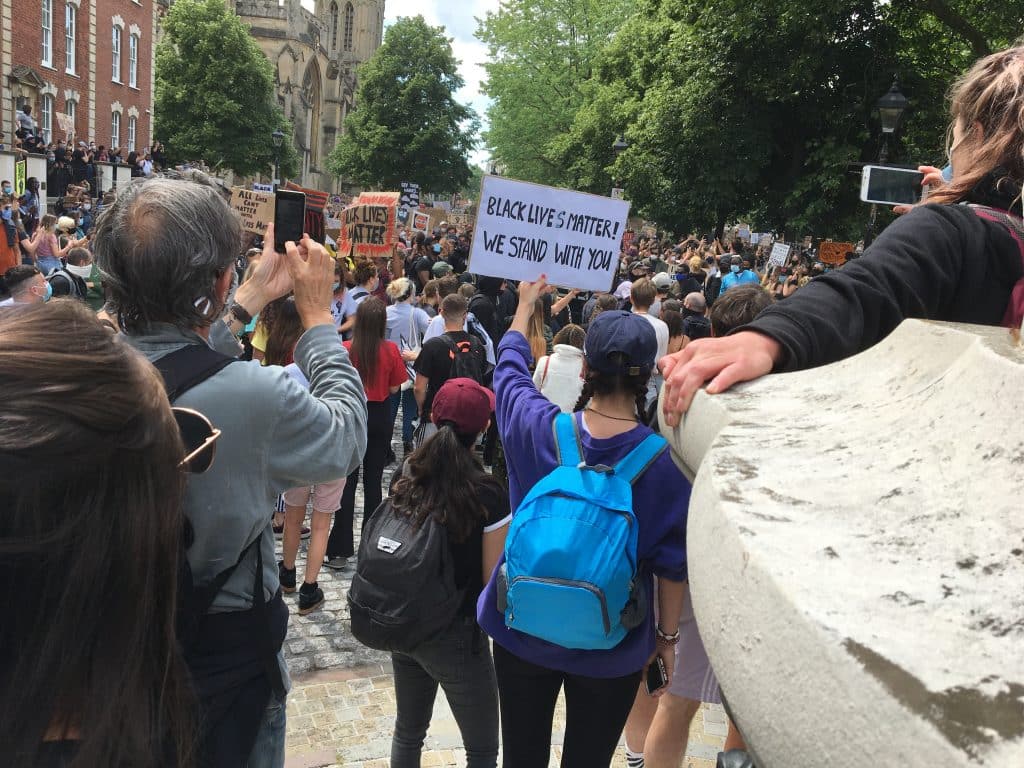Just Bronze and Stone?
Today – as we continue to mark the importance and relevance of the Black Lives Matter movement – our colleague Jada shares her thoughts about the toppling of the statue of Colston and the installation and removal of a statue of a Black Lives Matter protester on the now vacant plinth.
What’s in a name? What’s in bronze and stone? What does it mean to know the place in which you live has a history bathed in pain and suffering.
There has been so much debate since the toppling of Colston’s statue, the discussion of history being erased and the past forgotten. But let me assure you, it’s never forgotten.
Yes we do need to keep history alive, and yes I agree we should know the good the bad and the very ugly in all its forms. However ‘history’ needs to be questioned when it’s taught from one perspective, when it doesn’t include your story, when it treats you as the supporting character or as one of the extras in a larger act.
How is it your history when you are assigned to the periphery or erased from the picture in its entirety? So, no a toppled statue is not erasing history, it’s shining a light on the dark and painful story that is there, pulling the marginalised up and out of the shadows.
Why not ask what it feels like to repeatedly request for the statue to be removed, or wording added explaining that this man’s fortune was built from the blood, sweat and tears of Africans.
Or how it felt as a young black girl going to Colston Girls School, made to go to thanksgiving services for Colston and given detentions if you refused to give thanks to a slave trader! That this same man that ‘gave so generously’ to Bristol did so with money gained from a company that stamped its initials onto the chests of every man woman and child it enslaved.
It’s funny how the debate about Colston’s statue was drawn out over years and yet a statue put on a plinth to mark a tide of change was taken down in 24 hours. Statues such as Colston’s are there to glorify a man the plaque said was, ‘most virtuous and wise sons of Bristol’.
The statue had a central point in Bristol but not one that united. Instead its presence made many feel they weren’t part of the narrative and if they were, that black history and experience, was sidelined.
When I saw that a statue went up on that same plinth, one that reflected a black woman, standing fist in air, proud and strong and unapologetic I was uplifted. It wasn’t about the person, or the London-based artist for me. The statue that was erected in stealth had not been authorised, and not all black people felt the figure itself was one they would have chosen. However, her image, for that moment raised aloft, was for me, all our faces.
I immediately wanted to take my toddler, stand with him and explain again what that day we marched as a family was for. I wanted him to see his curly hair reflected back, his mother’s skin part of the picture and remember the historic day he held his sign aloft and called for the world ‘to be kind’.
Colston’s statue had always reinforced the feeling that the rest of the world did not see history in its entirety, and still felt no shame. A shame which should be carried like a lead weight, in the money that had lined the pockets and cascaded into this town. A trade that brutalised, killed, scarred generations, created a collective silent trauma, pulled apart family trees, renamed by force, literally stamped and seared new identities onto millions of Africans and left an intergenerational legacy in the very shaping of our societies.
How can we still hold a man such as this in esteem? After years of black voices being ignored, what other action is there but to pull down that statue, topple that system, spray paint the public face of racism and throw into the river the rule books? And instead stand upon that now vacant plinth, fist sky high to show we are still here, we are a part of the fabric of this nation and we will no longer be silent. We are not going anywhere and our stories need and must be told.

